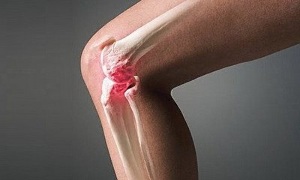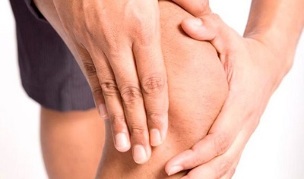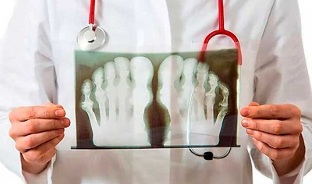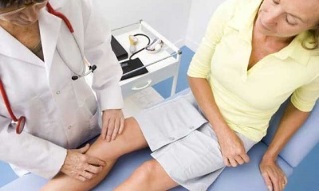The names of the diseases sound as if they affect the same organ system, namely the musculoskeletal system. What is the difference between arthritis and osteoarthritis and what are their similarities?
It is known for sure that the disease affects the musculoskeletal system, especially the joints, but the etiology of the diseases is different.
So arthritis occurs due to one type of infection: local or general, and osteoarthritis are degenerative processes that occur in the articular cartilage, due to the aging of the human body.
However, any person, no matter how old, can get arthritis and osteoarthritis.
Among others, osteoarthritis can refer to dystrophic processes, while arthritis can be a side effect of other endo- and exogenous diseases.
Among the former, osteoarthritis and deforming joints of osteoarthritis are distinguished, and arthritis is rheumatoid and rheumatic, specific infectious and post-traumatic, as well as arthritis can accompany concomitant diseases of the blood, respiratory system, digestion and others.
Basics
- Osteoarthritisis a chronic pathology of a degenerative-dystrophic nature. The onset of the disease is not associated with an inflammatory component. The pathological process is based on the loss of the ability of articular cartilage cells to regenerate and restore. Over time, painful abnormalities cover nearby anatomical structures: ligaments, bursae, synovium, muscle and bone tissue. Middle-aged and older people are more susceptible to osteoarthritis. According to the results of clinical studies, by the age of 45-65 years, 30% - 40% of the population undergo degenerative changes in the articular elements, and after 65 years the number of cases increases to 70% - 85%.
- Arthritisaffects newer segments of the population. Several types of diseases are found in every one thousand children. The overall prevalence of arthritis is high in people of all ages. Unlike osteoarthritis, the disease is inflammatory. Inflammation develops in the synovial membrane of the joint cavity. As the pathology progresses, it spreads to the cartilage and ligament apparatus, turning into osteoarthritis.
It can not be said which is worse: arthritis or osteoarthritis. Pathologies are interrelated. The articular elements, undergoing degenerative-dystrophic changes, respond to them with the development of the inflammatory process. The same situation can happen exactly the opposite. Places of pathological abnormalities after suffering from arthritis are a favorable environment for osteoarthritis.
Mechanism of pathology formation

The difference between diseases is noticed from the beginning - the mechanisms of their origin.
A fundamental role in the development of osteoarthritis plays:
- age-related changes;
- climatic period;
- violation of metabolic processes;
- heavy physical activity;
- highly traumatic surgical intervention;
- overweight;
- frequent joint microtrauma;
- uric acid levels increase;
- lack of blood supply;
- toxic intoxication of the body;
- lack of trace elements.
Factors that cause the development of osteoarthritis are early pathologies: acetabular elongation, osteochondropathy of the femoral head, endocrine diseases, hemophilia, diseases that provoked increased joint instability, weakness of the ligament apparatus. At a young age, degenerative changes develop against the background of congenital inferiority of the hip joints and traumatic lesions: subluxation and displacement of the femoral head, fractures of the femoral neck and pelvis.
The starting points in the formation of arthritis are:
- transferred extra-articular infections;
- autoimmune reactions of the body;
- inherited readiness of the gene that encodes information from the cell surface to deviations;
- spread of the infectious agent through the lymphatic and blood pathways from the main focus;
- inflammation of connective tissue;
- diseases of the nervous system;
- hypothermia.
Synovial fluid infection has a direct pathway - open lesions that penetrate the joint. The mechanism of onset of arthritis is equipped with a complex and diverse arsenal. The reason lies in the ability of the joints to respond quickly to any inflammation.
Difference in accompanying symptoms

So with arthritis, pain occurs more often during physical exertion, and pain can also occur at night when a person is in the same position for a long time.
With osteoarthritis, the pain occurs locally in every place, that is, where the inflammatory process takes place, but at rest the pain disappears.
The nature of pain is also different. For example, patients who develop arthritis suffer from acute, severe pain and tremors, and dull aches and pains accompany osteoarthritis.
Blood numbers are also great. In the first case, there is an increase in the erythrocyte sedimentation rate (ESR) and an increase in the level of C-reactive proteins, as well as a high level of leukocytes and seromucoids. In the second case, there are no such deviations.
The signs that accompany these diseases will help to understand the difference between osteoarthritis and arthritis.
In osteoarthritis, the knee and hip joints are mainly affected by abnormal deviations, sometimes the process is localized in the shoulder area. The pathology develops gradually. The first short-term pain does not allow the exact location of the lesion to be determined.
Over time, the clinical picture is complemented by the following signs:
- a kind of croaking sound appears when moving;
- meteorological dependence is observed;
- the intensity of the pain syndrome increases against the background of increased loads, at rest the pain passes; the range of motion
- gradually decreases;
- has thickening along the edge of the joint space;
- by increasing the volume, the processes compress the nerve endings, causing severe uninterrupted pain;
- articulation is exposed to instability.
Any joint of the musculoskeletal system can be affected by pathological abnormalities in arthritis. The most vulnerable are the small elements of the feet, hands, movable joints of the lower leg and elbow. Rheumatoid arthritis is characterized by the symmetry of focal lesions.
The first symptomatology, as in osteoarthritis, appears suddenly. The pathology clinic begins with a general illness. Pathological abnormalities increase rapidly, affecting the movement and functional abilities of the affected joint. But if osteoarthritis is characterized by a worsening of pain during movement, then in the case of arthritis, the more you move, the less pain. The intensity of painful sensations increases at night. In the morning, the patient has difficulty overcoming stiffness in the joints. By touch, pain is defined on the entire surface of the joint.
The situation is getting worse:
- local hyperemia;
- formation of subcutaneous nodes;
- swollen lymph nodes;
- peripheral nerve damage.
Pathology in the active phase is accompanied by a pronounced complex of general symptoms: an increase in temperature indicators, chills, fever and intoxication syndrome. In case of complications, other elements of the biological system are involved in the pathological condition: organs of sight, respiratory, digestive, cardiovascular, urinary and nervous systems.
Osteoarthritis, in addition to complete destruction of cartilage, causes disturbances in the biomechanics of the musculoskeletal system.Differential research methods
A detailed study of the current clinical picture allows us to understand how to distinguish arthritis from osteoarthritis with the greatest accuracy.
Differential characteristics are identified based on the results of the following studies:
- Complete blood count. In osteoarthritis, in most cases, the level of sedimentation and erythrocyte response in the blood remains normal. Arthritis is characterized by a significant increase in indicators, which confirms the presence of an inflammatory process in the body. The analysis does not give a clear definition of the disease, but makes it possible to distinguish between degenerative-dystrophic changes from inflammation.
- Biochemical analysis of blood sampling. In the case of arthritis, the study confirms the presence of inflammatory markers in the biomaterial: reactive protein C, seromucoid. It is possible to detect rheumatoid factor - immunoglobulin antibodies that are incorrectly produced by the body. Biochemical parameters for osteoarthritis remain normal.
- X-ray examination.In the initial stage of arthritis development, no significant changes are detected. With osteoarthritis, an uneven narrowing of the joint space is recorded, the formation of osteophytes (growth on the surface of bone tissue).
- MRI.The most reliable differential diagnosis of arthritis and osteoarthritis in the early stages. The technique allows the detection of changes in the structural structure of cartilage, compression of the synovial membrane, joint shedding in the cavity, newly formed cysts, self-growth of bone tissue.

Characteristics of therapy
Doctors of various qualifications are involved in the treatment of pathologies. With osteoarthritis, the patient is referred to an orthopedist-traumatologist. In the case of arthritis, the exact cause of the pathological changes is first determined. Depending on the circumstances discovered, a specialist is selected.
As a result, since both diseases affect the condition of the supporting apparatus, then their methods of treatment are identical to each other. An important condition for recovery is a decrease in total body weight and, therefore, a decrease in load on the organs affected by the disease. In both cases, if medications and courses of physiotherapy do not bring positive results, joint replacement is used.
Specific therapies, improvement gymnastics, medication and physiotherapy are also used. With more severe complications, arthroplasty is used.
In addition to identical methods, there is some difference in the treatment of pathologies.
For arthritis, treatment begins with immediate and vigorous therapy. Anti-inflammatory and antibacterial drugs have been prescribed. Preference is given to medicines with less pronounced side effects. If the result does not meet expectations, the medication is switched alternately.

Complex course of medicine includes:
- anti-articular antihistamine injections;
- corticosteroids;
- cytostatics;
- sulfonamide;
- products based on gold salts.
Prognosis with adequate and timely treatment of arthritis is usually good.
Osteoarthritis requires long-term and complete treatment. The main task of therapeutic measures in the treatment of osteoarthritis is the restoration of joint cartilage tissue. Pharmaceutical products with this capability include chondroprotectors. The most effective are chondroitin and glucosamine.Impaired blood microcirculation is eliminated with the help of vasodilators. To get rid of spastic pain, relax in muscle tone, muscle relaxants are prescribed. Topical application of warming oils and creams appears, which is strictly prohibited in case of arthritis.
In parallel, funds are used that stimulate metabolic processes, the body is nourished with vitamins and trace elements. Not the last place in osteoarthritis therapy is occupied by a specially developed therapeutic gymnastics.
Osteoarthritis belongs to the group of chronic diseases that cause irreversible consequences that can not be completely eliminated. Therapeutic measures have been created to slow down degenerative processes as much as possible.
In any case, people who observe any obvious signs of these diseases should immediately consult a specialist and it is not worth treating these diseases yourself. Take care of your health and get what you want.



































